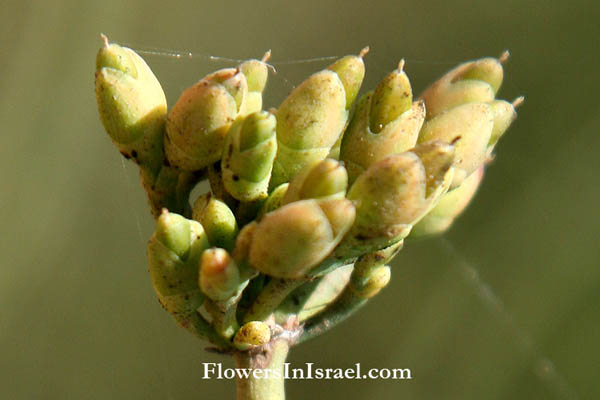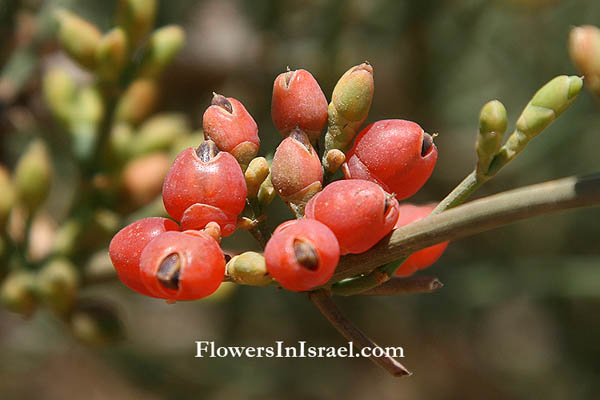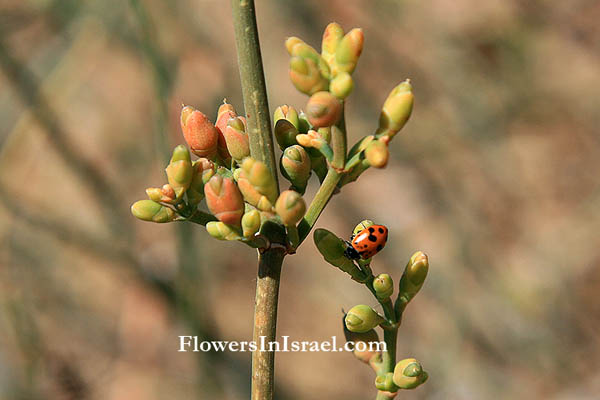Hebrew: שרביטן ריסני, Arabic: عدام , علندي
| Scientific name: | Ephedra aphylla Forssk. | |
| Synonym name: | Ephedra alte C.A.Mey. | |
| Common name: | Joint pine | |
| Hebrew name: | שרביטן ריסני | |
| Arabic name: | عدام , علندي | |
| Family: | Ephedraceae, שרביטניים |

|
| Life form: | Phanerophyte, shrub | |
| Stems: | Up to 150 cm high; stems usually rough, much branched | |
| Leaves: | Whorled, scale | |
| Flowers: | Yellow | |
| Fruits / pods: | Male cones in dense axillary clusters or on side branches; female cones axillary or on side branches; ripe cones fleshy and red-colored; seeds 1 or 2 per fruit | |
| Flowering Period: | March, April, May | |
| Habitat: | Sand, Hard rock outcrops | |
| Distribution: | Mediterranean Woodlands and Shrublands, Semi-steppe shrublands, Shrub-steppes, Deserts and extreme deserts | |
| Chorotype: | Saharo-Arabian | |
| Summer shedding: | Perennating |

Derivation of the botanical name: Ephedra, the Greek name used by Pliny for the common mare's tail (Hippuris; hippo "horse" and oura "tail") which it somewhat resembles. certain species are the source of ephedrine which, as ma-huang, the Chinese have used in medicine for centuries. aphylla, without leaves. alte, on high, high up, deeply, loftily. The Hebrew name: שרביטן, sharvitan, from שרביט, sharvit (scepter), because of the structure of the branches of the species.
As an "energy" product, ephedra increases alertness and perception. The use of ephedra dates back to bodyguards of Genghis Khan, who, legend has it, fearful of being beheaded if they fell asleep on duty, consumed tea containing ephedra to stay alert. Zen monks used the herb to promote calm concentration during meditation. Ephedra became popular to Mormon settlers in the early 1800s as a stimulant consumed in the form of tea in place of the coffee and black tea from which they abstained, giving the plant one of its many names, Mormon Tea. 
|